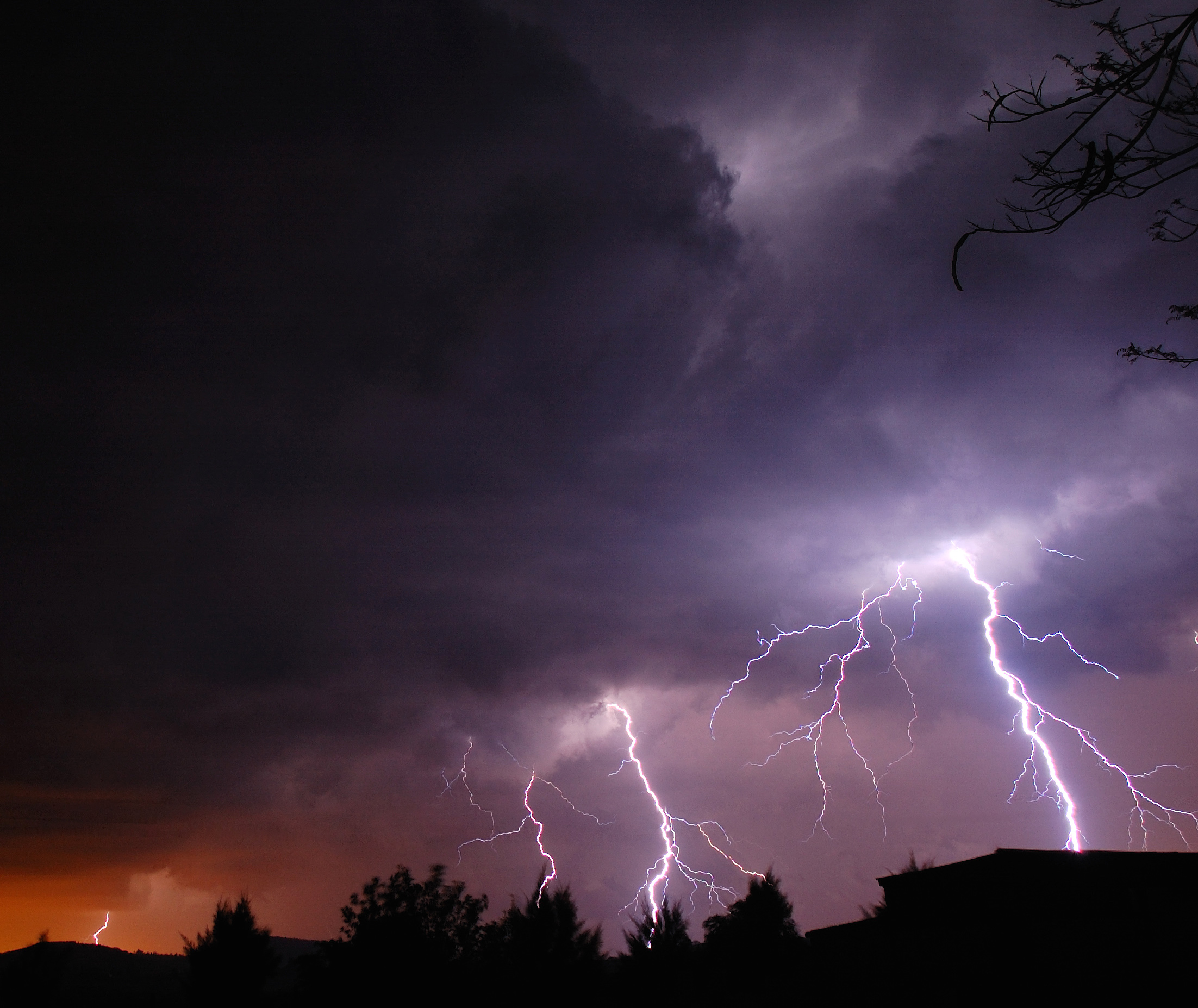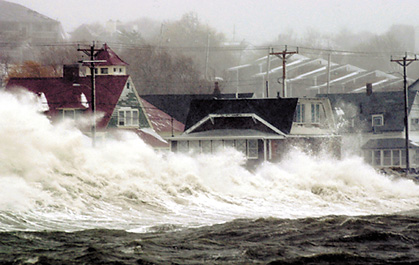Storm is a disturbance in the atmosphere of a planet or star. On Earth, people tend to think of storms as events that create hazardous weather conditions. Such storms are often part of a larger disturbance or “parent storm.”

Storms help distribute heat throughout Earth’s atmosphere. The sun heats the tropics more strongly than it does the polar regions. It also heats the lower atmosphere much more than the upper atmosphere. Storms transport heat from the tropics toward the poles and from the lower atmosphere to the upper atmosphere.
Cyclonic storms
include the largest storms on Earth. Three of the most important types are: (1) tropical cyclones, (2) extratropical cyclones, and (3) polar lows.
Tropical cyclones
are the most destructive. They are called hurricanes, typhoons, or cyclones depending on where they occur. The winds in these storms exceed 74 miles (119 kilometers) per hour. These storms always originate over tropical oceans, but they can move into the middle latitudes and over land. Weaker tropical cyclones with wind speeds from 38 to 73 miles (61 to 117 kilometers) per hour are called tropical storms.

Extratropical cyclones
are large, swirling storms that typically form along the jet streams between about 30 and 70 degrees of latitude. Jet streams are fast-moving air currents that occur at high altitudes. Extratropical cyclones are most common and strongest during the cooler seasons. Seen from above, they resemble a comma, with a “tail” of clouds trailing from a distinct core.
Extratropical cyclones are parent storms that produce much of the hazardous weather in the middle latitudes. A line of clouds along the tail typically produces showers and thunderstorms. The thunderstorms can produce hail, high winds, and tornadoes. Snowstorms and ice storms can develop in the core of the cyclone. In winter, blizzards occur on the northwest side of Northern Hemisphere cyclones and on the southwest side of Southern Hemisphere cyclones. If an extratropical cyclone moves slowly, thunderstorms can form repeatedly over the same area, causing flash floods.
Polar lows
form over the ocean in high latitudes, especially over the north Pacific and north Atlantic oceans. They can form very quickly, but typically last just 1 or 2 days. A polar low can bring strong winds and a large amount of rain or snow. Polar lows that form in the Arctic are sometimes called Arctic hurricanes, but their winds are not as strong as those of tropical storms.
Monsoonal storms
develop from differences in the sun’s heating between continents and oceans. These differences create a seasonal wind pattern called a monsoon. The largest monsoon occurs in summer in Southeast Asia and India. Thunderstorms within the monsoon can produce extreme rains that persist for weeks, leading to disastrous floods.
Other storms.
Some storms involve a change in the composition of the atmosphere. A dust storm, for example, is a moving cloud of small, windblown particles that severely reduce visibility. In a firestorm, fire superheats the air, causing the flames to spread rapidly. In a magnetic storm, charged particles from the sun bombard Earth’s atmosphere.
Extraterrestrial storms
are storms that occur in the atmospheres of other planets and of stars. For example, dust storms often occur on Mars, and the Great Red Spot of Jupiter is a storm that resembles a cyclone. Magnetic storms originate on the sun and are associated with sunspots and solar flares.
